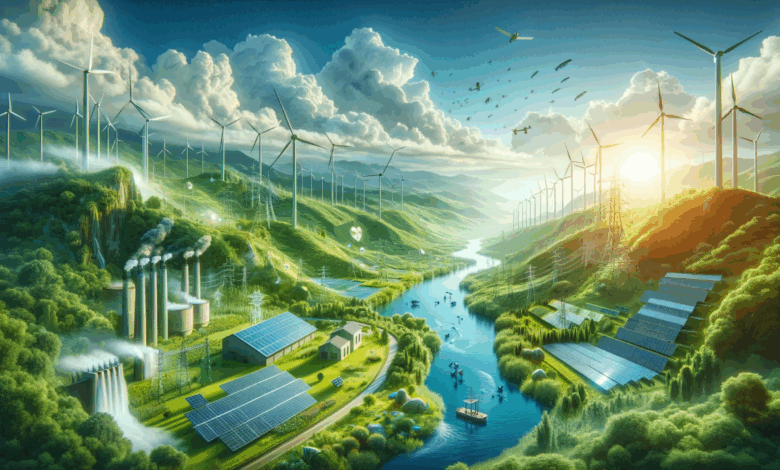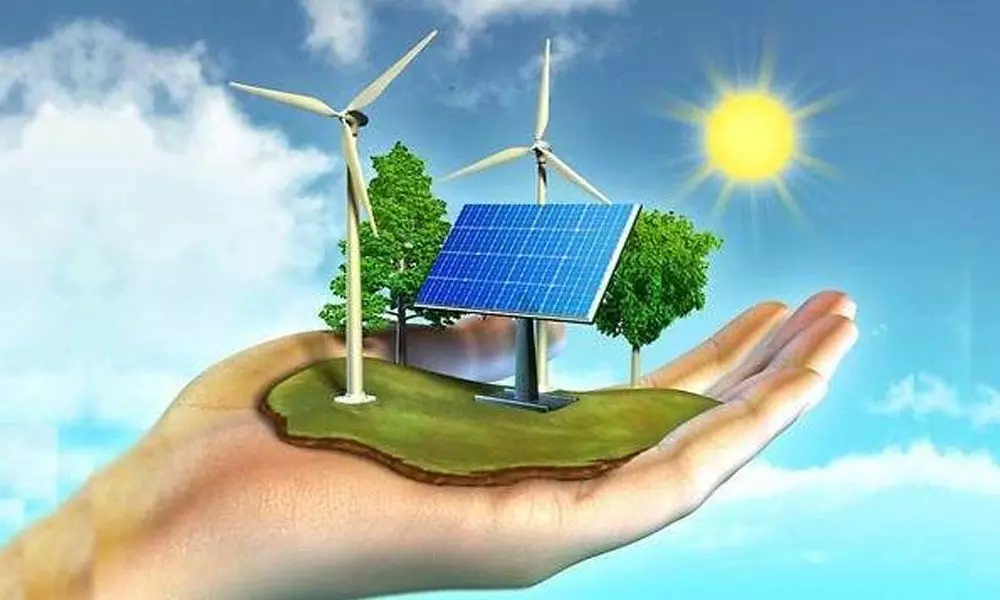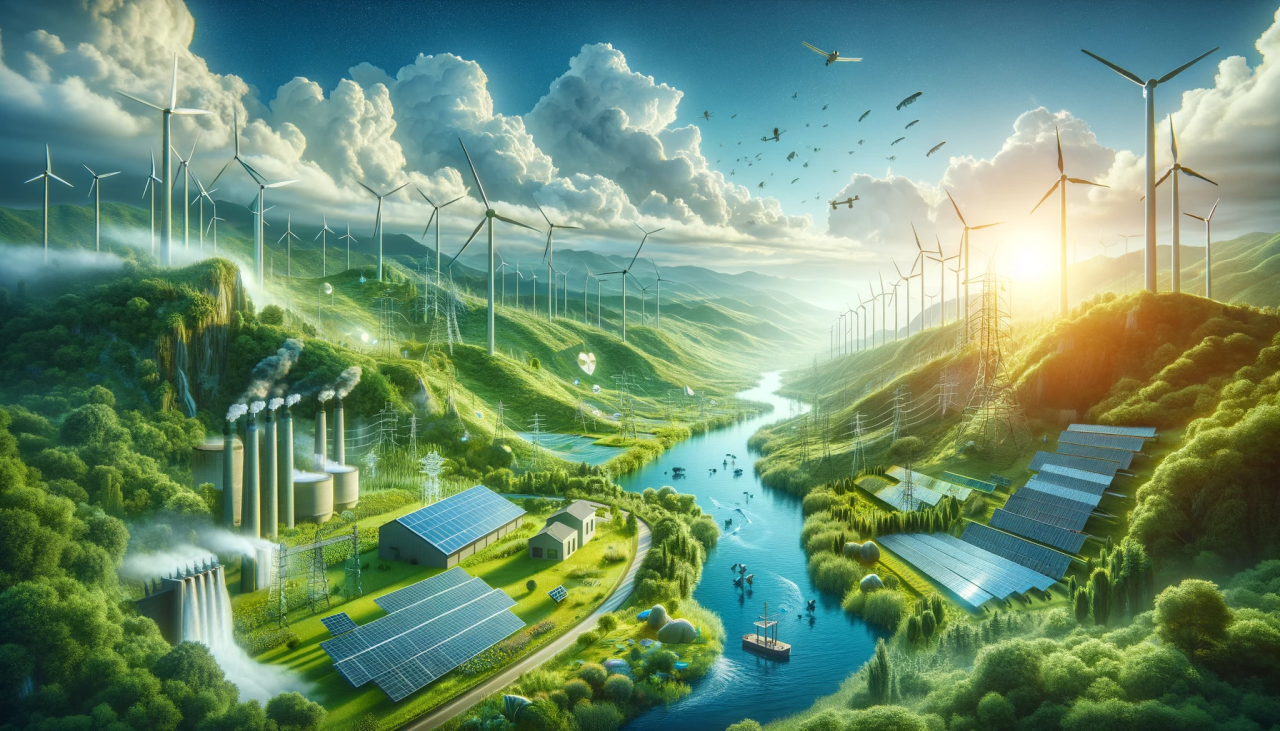Renewable Energy Revolution Transforms Global Landscape


The global energy sector is undergoing its most significant transformation since the Industrial Revolution, driven by unprecedented technological innovation that has made renewable energy not just environmentally preferable but economically dominant. This revolution extends far beyond simple environmental concerns—it represents a fundamental restructuring of global energy systems, economic relationships, and geopolitical dynamics. From dramatic cost reductions in solar and wind power to breakthroughs in energy storage and grid management, innovation has sparked a renewable surge that is reshaping how nations power their economies and how consumers interact with energy systems. This comprehensive analysis explores the technological breakthroughs, economic shifts, and policy developments driving the renewable energy revolution and examines its far-reaching implications for global sustainability, economic development, and energy security.
A. The Solar Power Transformation: From Niche to Mainstream
Solar energy has experienced the most dramatic transformation of any energy technology in history, evolving from an expensive niche application to the cheapest source of electricity in many markets worldwide.
A. Photovoltaic Technology Evolution: Continuous innovation in solar panel technology has driven exponential improvements in efficiency and cost-effectiveness.
-
Crystalline Silicon Advancements: Traditional silicon-based solar panels have seen efficiency rates increase from around 15% to over 22% for commercial panels, while manufacturing costs have plummeted by more than 90% since 2010. Companies like LONGi Solar and JinkoSolar have achieved these gains through improved crystal growth techniques, better light trapping, and reduced silicon waste.
-
Perovskite Solar Breakthroughs: Emerging perovskite technologies promise to revolutionize solar efficiency further, with laboratory cells achieving over 25% efficiency and tandem perovskite-silicon cells exceeding 33%. Companies like Oxford PV are commercializing these technologies, which could eventually enable efficiency rates approaching theoretical limits.
-
Bifacial Panel Innovation: Solar panels that capture light from both sides can increase energy generation by 5-20% compared to traditional single-sided panels. This innovation, pioneered by manufacturers like Trina Solar and Canadian Solar, effectively reduces the levelized cost of electricity by maximizing output from the same land area.
B. Manufacturing and Scale Economics: Innovations in production and supply chain management have been equally important to technological improvements.
-
Gigafactory Scale Production: The shift from megawatt-scale to gigawatt-scale manufacturing, exemplified by companies like Tongwei and JA Solar, has created unprecedented economies of scale. Modern solar gigafactories can produce enough panels annually to generate 5-10 gigawatts of electricity, reducing manufacturing costs through automation and volume purchasing.
-
Supply Chain Vertical Integration: Companies that control multiple stages of the solar value chain—from polysilicon production to panel assembly—have achieved significant cost advantages. This integrated approach reduces vulnerability to supply chain disruptions and price volatility in raw materials.
-
Advanced Manufacturing Techniques: The adoption of industry 4.0 technologies, including AI-driven quality control, robotic assembly, and digital twin simulations, has improved manufacturing yield rates while reducing labor costs and material waste.
C. Installation and System Integration Innovations: Beyond panel technology, innovations in how solar systems are deployed have accelerated adoption.
-
Floating Solar Development: The deployment of solar panels on water bodies, pioneered in countries like Japan and China, solves land use conflicts while improving panel efficiency through natural cooling. The global floating solar market is projected to grow from 1.6 GW in 2018 to over 10 GW by 2025.
-
Building-Integrated Photovoltaics: Solar technology that seamlessly integrates into building materials—from solar roof tiles to curtain walls—is eliminating aesthetic barriers to adoption. Companies like Tesla with Solar Roof and Onyx Solar with transparent solar windows are making solar generation an inherent part of building design.
-
Agrivoltaics Integration: The combination of solar energy production with agricultural activities enables dual land use, with solar panels providing shade for crops while farmers maintain the land. Studies show certain crops can thrive in partial shade conditions while co-location reduces land acquisition costs for solar developers.
B. Wind Power Innovation: Harnessing Atmospheric Resources
Wind energy has matured into a cornerstone of the renewable transition, with technological innovations enabling access to better wind resources and reducing costs.
A. Turbine Technology Evolution: The physical scale and efficiency of wind turbines have transformed dramatically.
-
Turbine Scale Increase: The average rotor diameter of new wind turbines has increased from 80 meters in 2000 to over 150 meters today, while hub heights have grown from 60 meters to over 100 meters. This scale increase allows access to stronger, more consistent winds, effectively doubling the energy capture per turbine.
-
Direct Drive Generator Adoption: The shift from gearbox-based systems to direct drive permanent magnet generators, pioneered by companies like Enercon and Siemens Gamesa, has improved reliability while reducing maintenance requirements and mechanical losses.
-
Advanced Blade Design: Innovations in blade aerodynamics, materials, and manufacturing have significantly increased energy capture. Companies like LM Wind Power and TPI Composites use carbon fiber partials, aerodynamic add-ons, and AI-optimized shapes to maximize performance while managing structural loads.
B. Offshore Wind Expansion: The move offshore has opened vast new resources and driven technological adaptation.
-
Floating Offshore Technology: Floating turbine platforms, demonstrated successfully in projects like Hywind Scotland and Kincardine, enable development in deep waters with superior wind resources. This innovation could potentially unlock 80% of the global offshore wind resource previously inaccessible with fixed-bottom technology.
-
Turbine Foundation Innovation: For fixed-bottom projects, innovations in foundation design—including jacket structures, monopiles, and gravity bases—have enabled development in deeper waters and more challenging soil conditions while reducing material requirements and installation costs.
-
Offshore Wind Logistics: Specialized installation vessels, remote monitoring systems, and predictive maintenance technologies have dramatically reduced operational costs for offshore projects. Digital twin technology allows operators to optimize maintenance schedules and predict failures before they occur.
C. Hybrid System Integration: Wind power increasingly functions as part of integrated energy systems.
-
Wind-Solar Complementarity: The natural complementarity between wind and solar resources—with wind often strongest when solar generation is lowest—creates opportunities for hybrid projects that deliver more consistent output. Combined projects can share grid connections and reduce overall system costs.
-
Wind-Hydrogen Integration: Excess wind generation is increasingly used to produce green hydrogen through electrolysis, providing both energy storage and a clean fuel source. Projects like Orsted’s H2RES in Denmark demonstrate how wind-to-hydrogen can provide grid flexibility while decarbonizing hard-to-electrify sectors.
-
Community and Distributed Wind: Innovations in smaller-scale turbine design and business models are enabling community ownership and behind-the-meter applications. These approaches increase local acceptance while providing economic benefits to host communities.

C. Energy Storage Breakthroughs: Enabling Renewable Dominance
Energy storage represents the critical enabling technology that allows variable renewable resources to provide reliable, dispatchable power.
A. Lithium-Ion Battery Revolution: Dramatic cost reductions and performance improvements have made battery storage economically viable at grid scale.
-
Chemistry Innovations: Continuous improvement in battery chemistry, from nickel-manganese-cobalt (NMC) to lithium-iron-phosphate (LFP), has improved energy density, safety, and cycle life while reducing costs. CATL’s announcement of sodium-ion batteries and Tesla’s tabless battery design represent the next wave of innovation.
-
Manufacturing Scale-Up: Gigafactories like Tesla’s Nevada facility and CATL’s expanding global network have driven manufacturing costs down 89% between 2010 and 2020. Automated production and improved yield management continue to push costs lower while increasing production volumes.
-
Second-Life Applications: Repurposing electric vehicle batteries for stationary storage applications creates value streams that improve the overall economics of both transportation electrification and energy storage. Companies like Connected Energy and B2U Storage Solutions are demonstrating the technical and commercial viability of second-life battery systems.
B. Long-Duration Storage Technologies: As renewable penetration increases, the need for storage beyond lithium-ion’s 4-8 hour duration is growing.
-
Flow Battery Development: Vanadium and zinc-bromine flow batteries offer longer duration storage with minimal degradation over time. Companies like Invinity Energy Systems and ESS Inc. are commercializing these technologies for applications requiring 6-12 hours of storage duration.
-
Mechanical Storage Solutions: Pumped hydro storage continues to provide the vast majority of global storage capacity, while innovations in compressed air energy storage (CAES) and gravity-based systems (Energy Vault) offer alternatives for specific geographic contexts.
-
Thermal Energy Storage: Technologies that store energy as heat, such as molten salts in concentrated solar power plants or novel materials like silicon, provide another pathway to long-duration storage at potentially lower costs than electrochemical solutions.
C. Grid Integration and Management: Innovations in how storage is deployed and operated maximize its value to the grid.
-
Virtual Power Plants: Aggregations of distributed storage resources, coordinated through cloud-based platforms, can provide grid services equivalent to traditional power plants. Companies like Sunrun and Sonnen are demonstrating how residential batteries can form virtual power plants that benefit both consumers and grid operators.
-
Storage Hybridization: Combining storage with renewable generation in single projects creates more valuable, dispatchable resources. Nearly 90% of new solar projects in some U.S. markets are now proposed with co-located storage.
-
AI-Optimized Operation: Machine learning algorithms maximize storage value by optimizing charge/discharge cycles based on electricity prices, renewable generation forecasts, and grid conditions. These systems can increase storage revenue by 20-40% compared to simple operational strategies.
D. Grid Modernization and Digitalization
The electricity grid itself is undergoing a fundamental transformation from a centralized, one-way system to a dynamic, intelligent network.
A. Grid Management Innovation: Digital technologies are revolutionizing how grid operators manage complexity and variability.
-
Advanced Forecasting Systems: AI-powered renewable generation forecasting, using satellite imagery, weather models, and historical data, has dramatically improved prediction accuracy. These systems allow grid operators to manage variability more effectively, reducing reserve requirements and integration costs.
-
Distribution Management Systems: Sophisticated software platforms give distribution utilities visibility and control over distributed energy resources, enabling more efficient local grid management and preventing congestion or voltage issues.
-
Grid-Forming Inverters: Advanced inverters that can stabilize grid frequency without conventional generation are essential for achieving very high renewable penetration. These technologies, being deployed in projects like South Australia’s Hornsdale Power Reserve, represent a fundamental shift in how grid stability is maintained.
B. Market and Regulatory Innovation: New business models and regulatory frameworks are essential to support the renewable transition.
-
Time-Varying Electricity Pricing: Dynamic pricing structures that reflect real-time grid conditions give consumers and automated systems incentives to use electricity when it’s most abundant and avoid use during scarcity periods.
-
Distribution System Planning: Integrated distribution planning processes that proactively identify hosting capacity for distributed resources and plan necessary upgrades enable faster and more cost-effective renewable integration.
-
Performance-Based Regulation: Regulatory frameworks that reward utilities for outcomes like reliability, affordability, and emissions reduction rather than capital investment align utility incentives with public policy goals.
C. Consumer Empowerment Technologies: The relationship between consumers and the energy system is becoming more interactive and value-creating.
-
Home Energy Management Systems: Integrated platforms that coordinate rooftop solar, storage, electric vehicles, and smart appliances can optimize energy costs and comfort while providing grid services. Companies like Span.IO and Lumin are developing next-generation systems that make home energy management seamless.
-
Community Choice Aggregation: Local governments are increasingly aggregating electricity demand to procure renewable energy on behalf of their residents, creating scale and negotiating power while maintaining local control.
-
Blockchain Energy Trading: Peer-to-peer energy trading platforms enabled by blockchain technology allow consumers with solar panels to sell excess generation directly to neighbors. While still nascent, these platforms represent a potential future of decentralized, transactive energy systems.

E. Economic and Geopolitical Implications
The renewable energy surge is reshaping global economic relationships and geopolitical dynamics in profound ways.
A. Job Creation and Economic Development: The renewable transition is creating millions of jobs worldwide while transforming regional economies.
-
Manufacturing Renaissance: Countries that position themselves as manufacturing hubs for renewable technologies, like China for solar panels and Europe for wind turbines, are capturing significant economic benefits. The global renewable energy manufacturing sector could employ over 10 million people by 2030.
-
Installation and Maintenance Services: The distributed nature of renewable energy creates local jobs that cannot be outsourced. Solar installer is consistently among the fastest-growing occupations in multiple countries.
-
Rural Economic Revitalization: Renewable projects, particularly in rural areas with good wind or solar resources, provide new revenue streams for landowners and local governments through lease payments and tax revenues.
B. Energy Access and Development: Renewable technologies are transforming energy access in developing regions.
-
Mini-Grid and Off-Grid Solutions: Solar home systems and renewable mini-grids are bringing electricity to remote communities faster and more cost-effectively than traditional grid extension. Companies like M-KOPA and Zola Electric have connected millions of households across Africa.
-
Agricultural Productivity: Solar-powered irrigation and processing can transform agricultural productivity while reducing diesel costs. These applications are particularly valuable in regions with high solar insolation and limited grid connectivity.
-
Healthcare and Education Enablement: Reliable renewable electricity enables refrigeration for vaccines, power for medical equipment, and lighting for evening education, creating broad social benefits beyond simple energy access.
C. Geopolitical Shifts: The renewable transition is redistributing global energy power and influence.
-
Reduced Fossil Fuel Dependence: Countries that currently import fossil fuels can enhance their energy security and reduce trade deficits by developing domestic renewable resources. This shift reduces their vulnerability to price volatility and supply disruptions.
-
Critical Mineral Dynamics: The renewable transition creates new dependencies on minerals like lithium, cobalt, and rare earth elements, shifting geopolitical leverage to countries with these resources. Managing these dependencies through recycling, substitution, and diversified sourcing represents a key challenge.
-
Technology Leadership Competition: Countries that lead in renewable technology innovation and manufacturing stand to gain significant economic and geopolitical advantages. The competition between China, the United States, and Europe in areas like battery manufacturing and hydrogen technology illustrates this dynamic.
Conclusion: The Path to a Renewable Future
The renewable energy surge, sparked by continuous technological innovation, represents one of the most significant and hopeful developments in addressing climate change while creating economic opportunity. The progress achieved to date demonstrates that rapid energy transformation is technically feasible and economically advantageous. However, maintaining this momentum requires continued innovation, supportive policies, and massive investment in both new technologies and enabling infrastructure. The countries, companies, and communities that embrace this transformation and position themselves at the forefront of renewable energy development will reap significant economic, environmental, and strategic benefits in the coming decades. The renewable revolution is well underway, but its ultimate success depends on sustaining and accelerating the innovation cycle that sparked it, ensuring that clean, affordable, reliable energy becomes the foundation for global prosperity and sustainability.
Tags: renewable energy, solar power, wind energy, energy storage, clean technology, sustainability, climate change, energy transition, green innovation, solar panels, wind turbines, battery technology



